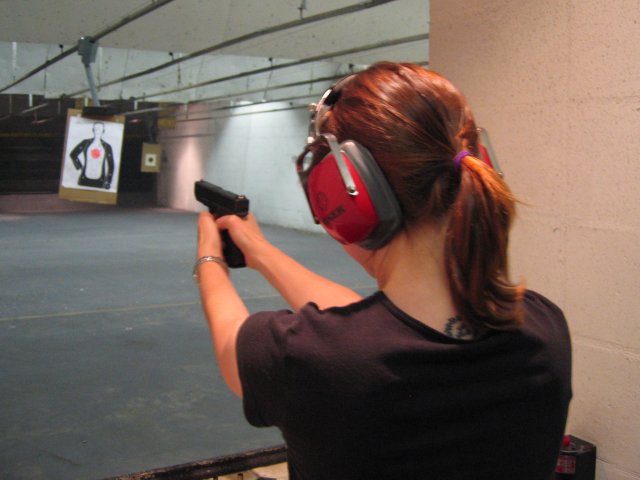America isn’t a perfect country, as every nation on earth has problems, but thanks to the Constitution bequeathed to us by our founders, Americans are among the freest people, if not the freest people, ever to live.
The Constitution recognizes “inalienable” human rights that everyone should have, and that includes the right to self-defense through firearms ownership. In most other countries, only the police, the military and government agents are allowed the so-called “privilege” of firearms ownership and possession.
But just because Americans enjoy the right of firearms ownership does not make all of us firearms experts. In fact, far too few gun owners can honestly say they “experts” with their guns; in fact, there really are too many Americans who aren’t even proficient with their firearms, and there are several ways you can spot them. (RELATED: Getting Ready To Buy Your First Handgun? Here Are Some Tips To Help You Find The Right One)
“Tea cupping” your handgun: In order to become a better marksman, it is necessary to master the fundamentals of shooting. Some fundamentals (like trigger pull) are the same for rifles and handguns, and some apply to one or the other. For handguns, one of the most common mistakes is “tea cupping,” which is an improper way to hold your weapon. Teacupping occurs when the shooter holds one hand underneath the handgun, while the other is holding the pistol’s grips. “This type of grip is unstable and will make it hard to control” the weapon, notes the American Prepper Network.
“Crossed thumbs” grip: This is another common mistake made by amateur shooters, and again it, too, can result in poor marksmanship and poor recoil control. This occurs when a person grips the handgun and literally crosses thumbs, extending the supporting hand thumb over the thumb of their shooting hand, under the slide (on a semi-automatic). This kind of grip can cause serious injury to the shooter’s hand.
Wrong stance: The way a shooter stands when firing their weapon is just as important for accuracy as a good grip, but many shooters don’t know how to take a correct stance. Not only does proper stance provide a more stable position, it helps shooters more easily acquire their target and put rounds downrange where they are intended to go. But too many shooters will lean forward or backward too much, for instance, throwing off accuracy. The proper stance is to lean just slightly forward with shooting arm fully extended and supporting arm bent slightly, both arms level with shoulders.
Foot position matters: Most often foot position is determined as what is most comfortable for the individual, but there are some things that beginning shooters do that will throw off accuracy and make them less likely to quickly obtain target acquisition. Generally speaking, your feet should be spread to shoulder length, not close in; many times new shooters will take aim and fire standing normally – that is, not taking a wider stance, which makes for a more stable shooting platform.
Wrong focus: New shooters aim at their target incorrectly, which makes them far less accurate. Amateur shooters often focus their vision directly on their target, or they will focus on the rear sight of their handgun. They should be focusing on their front sight. By focusing on the front site, everything else will line up and come into focus as necessary. New shooters forget that the front sight determines where the round goes. (RELATED: Deep State Now Pressuring Doctors Into Spying On Patients Who Own Guns)
‘Fat-fingering’ the trigger: New shooters tend to put too much finger on the trigger – so much so that it sort of envelops both sides of the trigger. This will result in too much movement of the handgun when firing, breeding inaccuracy.
‘Jerking’ the trigger: Amateurs very often don’t gently squeeze the trigger, they will pull it or jerk it, which again throws the gun off-target, making them miss what they’re aiming at. Jerking also involves a motion that is too rapid, too sudden. Proper trigger pull is gentle and done with the front pad of the finger (or about the top third of the tip of your index finger).
Flinching before firing: Shooters without a lot of experience tend to flinch before actually squeezing the trigger. It’s a natural instinctive thing to do when our body knows it is about to receive an impact (the recoil of the handgun). This tendency can generally be “cured” through frequent shooting practice, so that handgun owners can become more accustomed to their weapon’s function.
